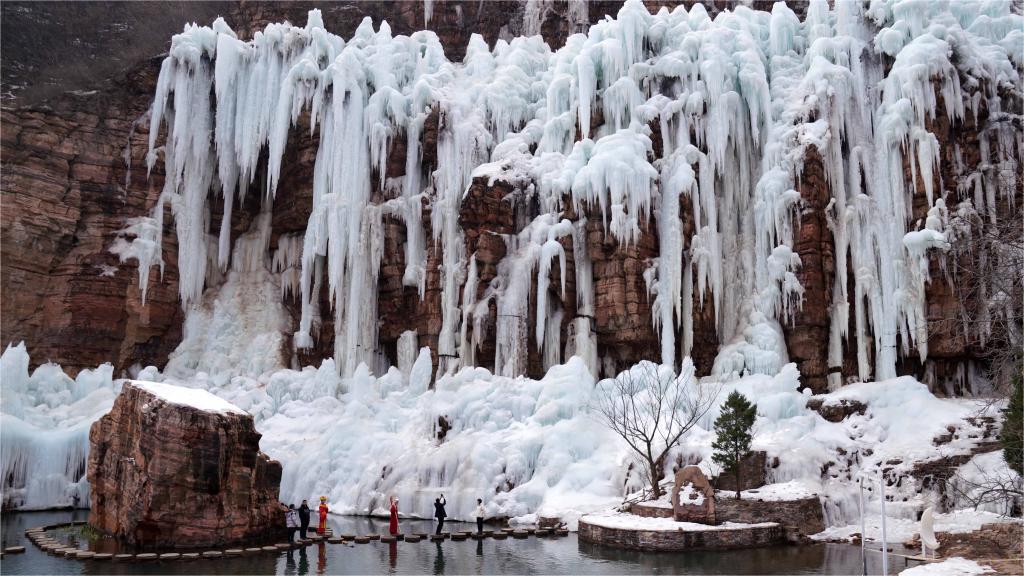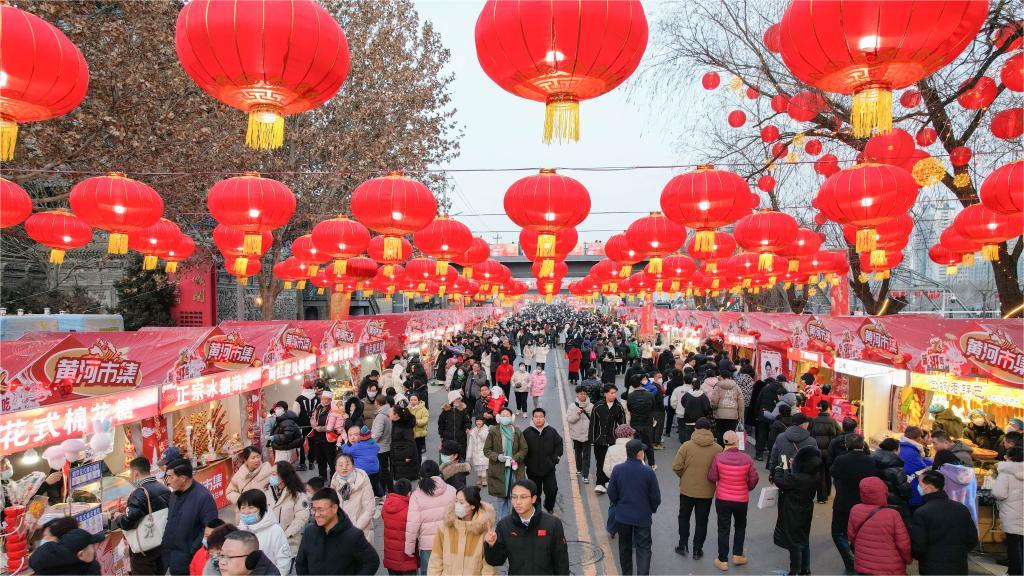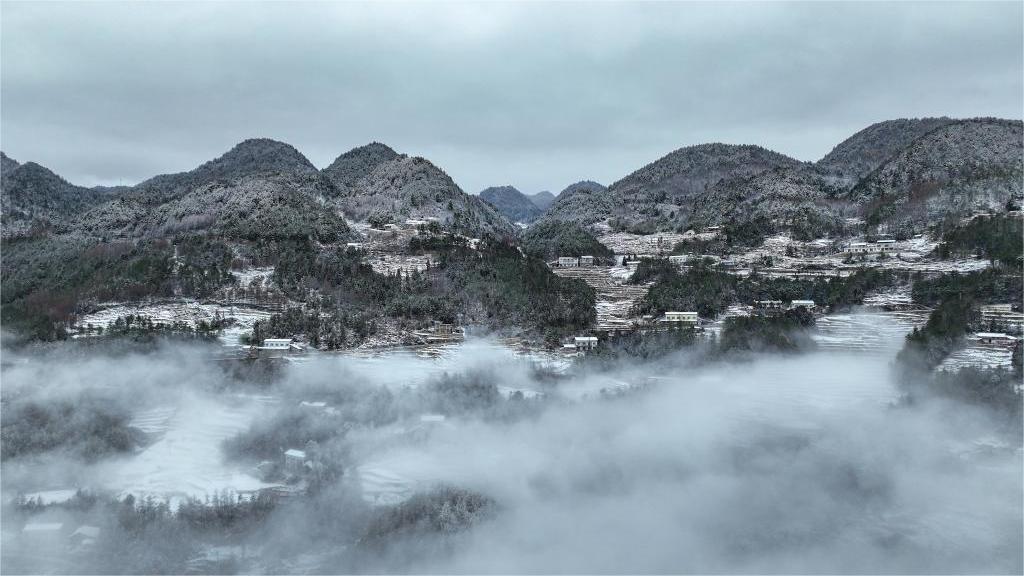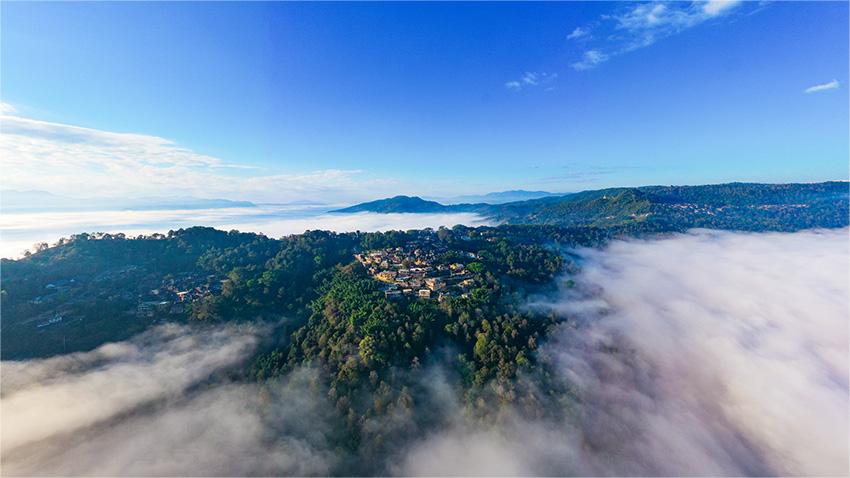Loong-themed cultural elements shine during Spring Festival

Members of a Tongliang Dragon Dance performing troupe perform "fire dragon dance" in a shower of molten iron in Harbin, northeast China's Heilongjiang Province on Jan. 29, 2024. (Xinhua/Zhang Tao)
BEIJING, Feb. 17 (Xinhua) -- On Feb. 14, during the Chinese New Year holiday, the Panlongcheng Ruins Museum in Wuhan in central China's Hubei Province welcomed a steady stream of visitors.
One exhibit that caught tourists' attention was a golden ornament adorned with inlaid turquoise, featuring an intricate Chinese dragon design embossed upon it. The artifact serves as compelling evidence of spiritual beliefs held by Chinese ancestors during the Shang Dynasty (1600 BC-1046 BC).
Dating back about 3,500 years, the Panlongcheng site has yielded a wealth of archaeological discoveries, such as walled palaces, royal cemeteries and craft workshops. Regarded as the root of today's Wuhan, the site was the center of the early Bronze Age civilization along the middle reaches of the Yangtze River.
As an important cultural heritage, Panlongcheng provides material evidence that both the Yellow River and Yangtze River belong to the same Chinese civilization.
Throughout Chinese history, the image of the loong, or the Chinese dragon, has evolved continuously, yet its essence has been passed on through generations of Chinese people.
At an exhibition currently underway in the National Museum of China in Beijing, over 200 pieces and sets of collections have been put on display, narrating the story and significance of the loong as a totem of Chinese culture. The exhibition, titled "A New Year Guarded by the Dragon: Exhibition for the Chinese New Year," delves into various perspectives spanning customs, rites, history, culture, art and lifestyle.

This photo taken on Feb. 7, 2024 shows a view of the Dragon King Temple Park in Wuhan, central China's Hubei Province. (Management center of the Dragon King Temple Park/Handout via Xinhua)
Xie Zhaoliang is an inheritor of the Tongzhou Canal Dragon Lantern craft and dance who leads his team in street parades, performing the double dragon dance. The majestic Chinese dragons, rising and coiling, bestow Lunar New Year's blessings upon local villagers amidst lively beats of drums and gongs.
"By reviving the nearly 200-year-old Tongzhou Canal Dragon Lantern tradition during the Spring Festival, we are not only enhancing the New Year's atmosphere but also introducing younger generations to this cherished tradition," Xie said.
The art of dragon dance from Beijing's Tongzhou District, also known as the dance of "Tongzhou Canal Dragon Lantern," has been showcased in schools and exhibited in museums.
A newly opened museum dedicated to Grand Canal dragon dancing curates New Year's pictures, stamps and postcards featuring dragon dancing themes from home and abroad. Visitors can espy the tradition of praying for safety and prosperity through dragon dances while also gaining insight into the global influence of Chinese dragons.
The imagery of the loong has adorned the streets of Beijing and Wuhan, with numerous international brands decorating their shop windows with Chinese dragons. Posters of the film "Wish Dragon" were spotted at a shopping mall in Wuhan. Directed by a foreign filmmaker, the movie draws inspiration from the story of his Chinese friend, presenting a heartwarming tale of personal growth and friendship.
In Beijing, flash mob performances of dragon and lion dances have graced many cultural sites along the Central Axis. These revitalized dances wind through the streets, striving to preserve local traditions while enriching the Spring Festival celebrations for both locals and tourists.
Loong-themed exhibitions, carnivals and creative cultural products are captivating tourists nationwide, injecting strong momentum into China's rebounding cultural and tourism market. From Feb. 10 to 13, the 174 key tourist attractions in Beijing collectively welcomed more than 9.6 million visitors, marking an impressive year-on-year increase of 80.4 percent.
At Beihai Park, creative cultural products inspired by the Nine-Dragon Screen have garnered enthusiastic responses from tourists. These products convey good wishes, with rising dragons symbolizing flourishing careers and vitality, while coiled dragons represent pervasive happiness.
In addition to enjoying the presence of the loong in the park, tourists can also immerse themselves in Chinese dragon culture by appreciating the creative cultural products, noted Zhang Mian, director of the Beihai Park research office.
Photos
Related Stories
- Extended Spring Festival holiday sparks surge in long-distance travel
- Chinese people spend Spring Festival holiday in diversified ways
- Longer Spring Festival holiday sparks travel frenzy among Chinese
- People across China enjoy Spring Festival holiday in various ways
- Chinese artists bring joy of Spring Festival to New Zealand capital
Copyright © 2024 People's Daily Online. All Rights Reserved.









